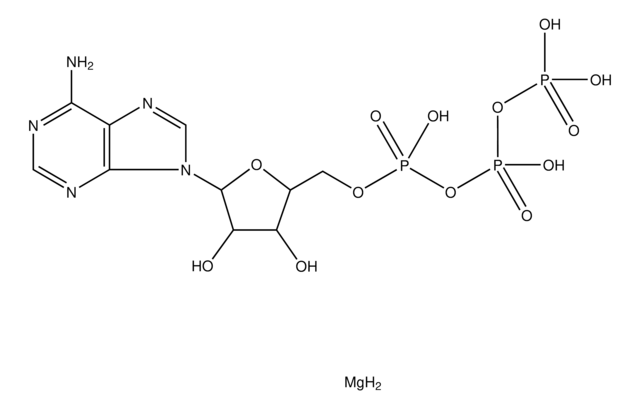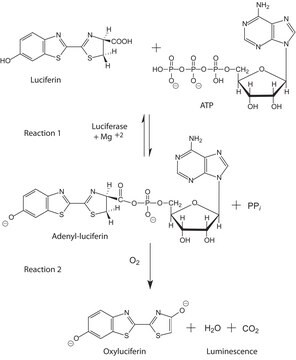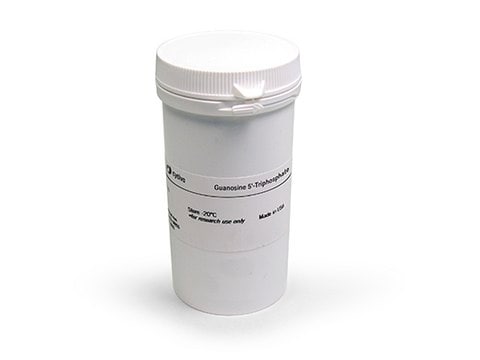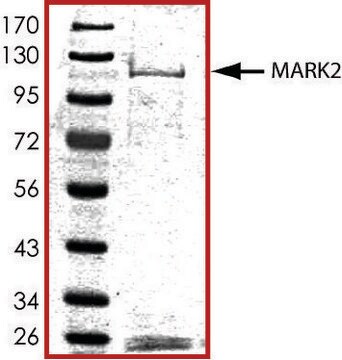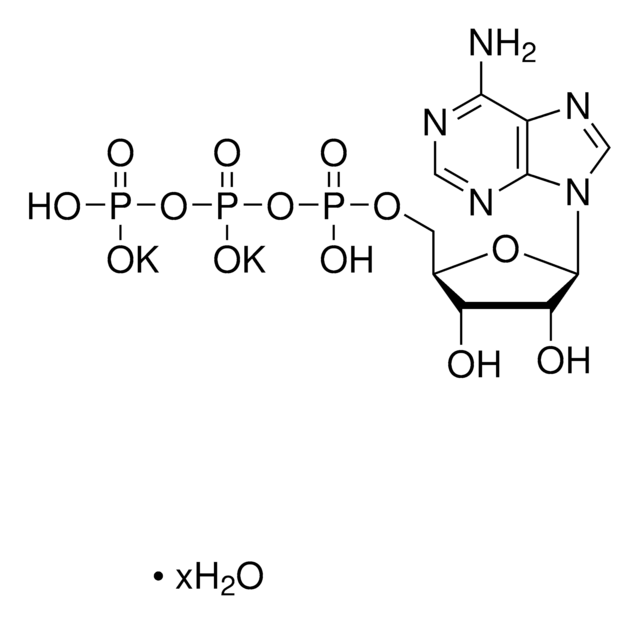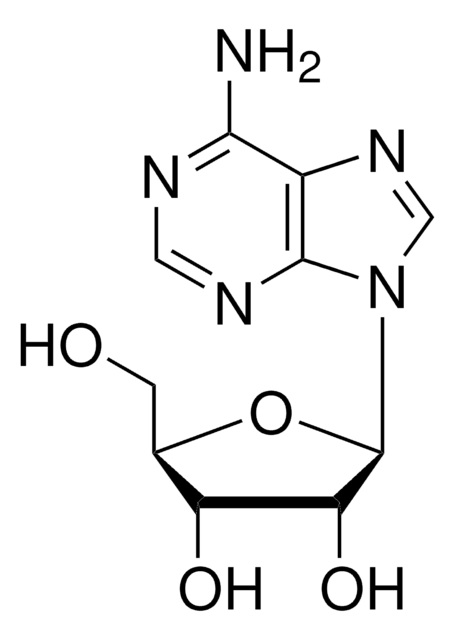A1852
Adenosine 5′-triphosphate (ATP) disodium salt hydrate
vial of 30 mg
Synonyme(s) :
ATP disodium hydrate
About This Item
Produits recommandés
Source biologique
microbial (Corynebacterium sp.)
Niveau de qualité
Essai
≥99% (HPLC)
Forme
powder
Conditionnement
vial of 30 mg
Solubilité
water: 50 mg/mL, clear, colorless
Température de stockage
−20°C
Chaîne SMILES
Nc1ncnc2n(cnc12)[C@@H]3O[C@H](COP(O)(=O)OP(O)(=O)OP(O)(O)=O)[C@@H](O)[C@H]3O
InChI
1S/C10H16N5O13P3.2Na.H2O/c11-8-5-9(13-2-12-8)15(3-14-5)10-7(17)6(16)4(26-10)1-25-30(21,22)28-31(23,24)27-29(18,19)20;;;/h2-4,6-7,10,16-17H,1H2,(H,21,22)(H,23,24)(H2,11,12,13)(H2,18,19,20);;;1H2/q;2*+1;/p-2/t4-,6-,7-,10-;;;/m1.../s1
Clé InChI
NTBQNWBHIXNPRU-MSQVLRTGSA-L
Vous recherchez des produits similaires ? Visite Guide de comparaison des produits
Catégories apparentées
Description générale
Application
- in rat hippocampal slice cultures to mimic synaptic signalling
- in the isolation of plasmid from primary porcine alveolar macrophages (PAMs)
- as a component of hot reaction kinase buffer for in gel kinase assay
Actions biochimiques/physiologiques
Code de la classe de stockage
11 - Combustible Solids
Classe de danger pour l'eau (WGK)
WGK 2
Équipement de protection individuelle
Eyeshields, Gloves, type N95 (US)
Faites votre choix parmi les versions les plus récentes :
Déjà en possession de ce produit ?
Retrouvez la documentation relative aux produits que vous avez récemment achetés dans la Bibliothèque de documents.
Les clients ont également consulté
Notre équipe de scientifiques dispose d'une expérience dans tous les secteurs de la recherche, notamment en sciences de la vie, science des matériaux, synthèse chimique, chromatographie, analyse et dans de nombreux autres domaines..
Contacter notre Service technique


